Assassination of Benazir Bhutto: Pakistani PM Murder Case
The terrible assassination of Benazir Bhutto on December 27, 2007, shocked Pakistan and the entire world. Her passing marked a dramatic shift in Pakistani politics, the effects of which may still be seen today.
The assassination of Benazir Bhutto is not only a horrific crime, but it also portrays the complexities of Pakistani politics, the fight against terrorism, and the ongoing fight for democracy in the region.
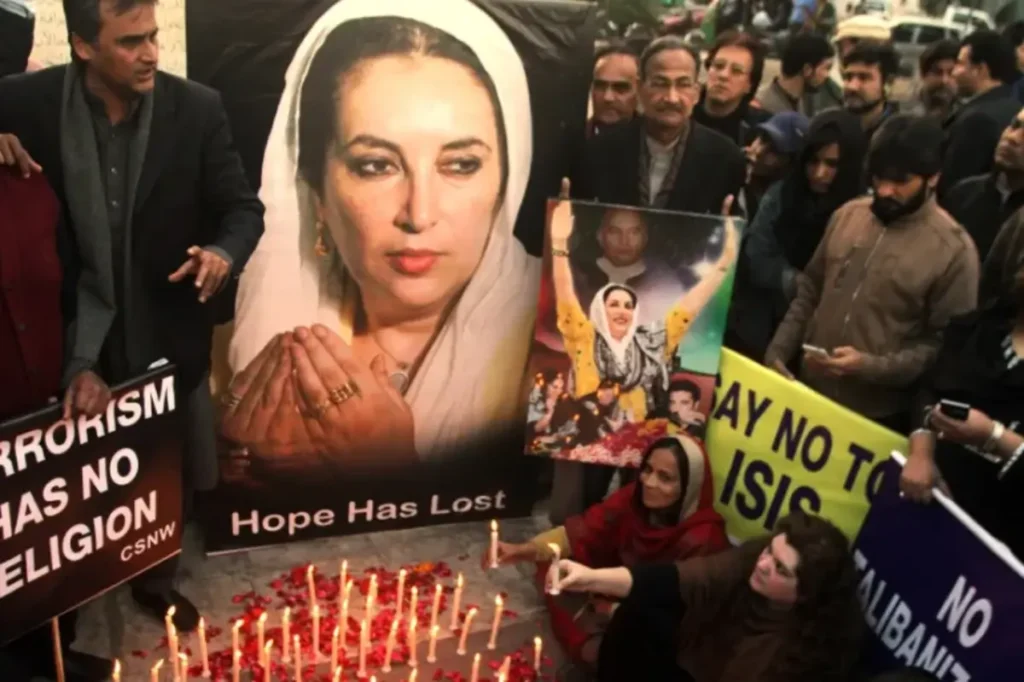
Background
Benazir Bhutto served as the first woman Pakistani Prime Minister from 1953 to 2007. She was also the first democratically elected Prime Minister of the Muslim World.
Her turbulent life came to an end when she was assassinated. She became the PPP’s chairman in 1982. She is the daughter of Prime Minister Zulfikar Ali Bhutto, the founder of the Pakistan Peoples Party (PPP).
Military dictator General Zia-ul-Haq toppled the government of Zulfikar Ali Bhutto and also targeted her daughter Benazir by keeping her in prison.
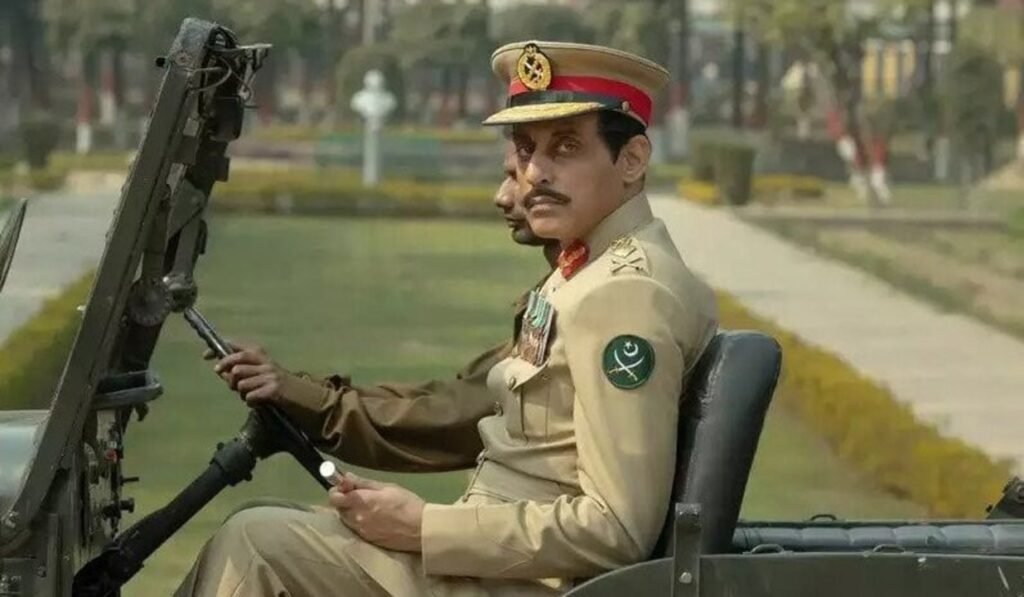
She spent several years in exile in London after the sudden end of her two terms as prime minister in the 1990s due to several corruption cases. However, these cases are considered as politically motivated by former Prime Minister Nawaz Sharif.
She had intended to run in the 2008 general election. So, she returned to Pakistan by making a deal with then-President (military dictator) Pervaiz Musharraf.
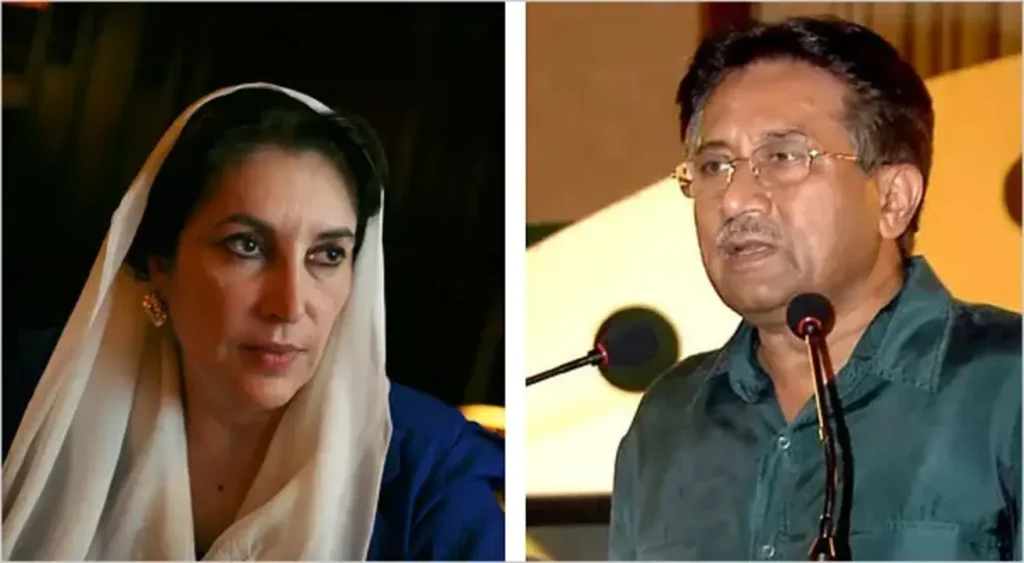
Return to Pakistan
After years of self-exile, Benazir returned to Pakistan in 2007 as part of an amnesty agreement with then-President Pervaiz Musharraf. She escaped an attempted murder during her return on October 18, 2007, just after she landed at Jinnah International Airport, Karachi.
Two bombs happened while she was traveling with a rally that welcomed her after eight years of exile. She remained unharmed but at least 450 people were injured and 139 people died in explosions.
Six police officers and at least fifty members of PPP security staff formed a human chain around the truck of Benazir to stop suicide bombing terrorists from accessing Benazir. They all died while rescuing Benazir as suicide bombers exploded near them. Several high-ranking officials suffered injuries.
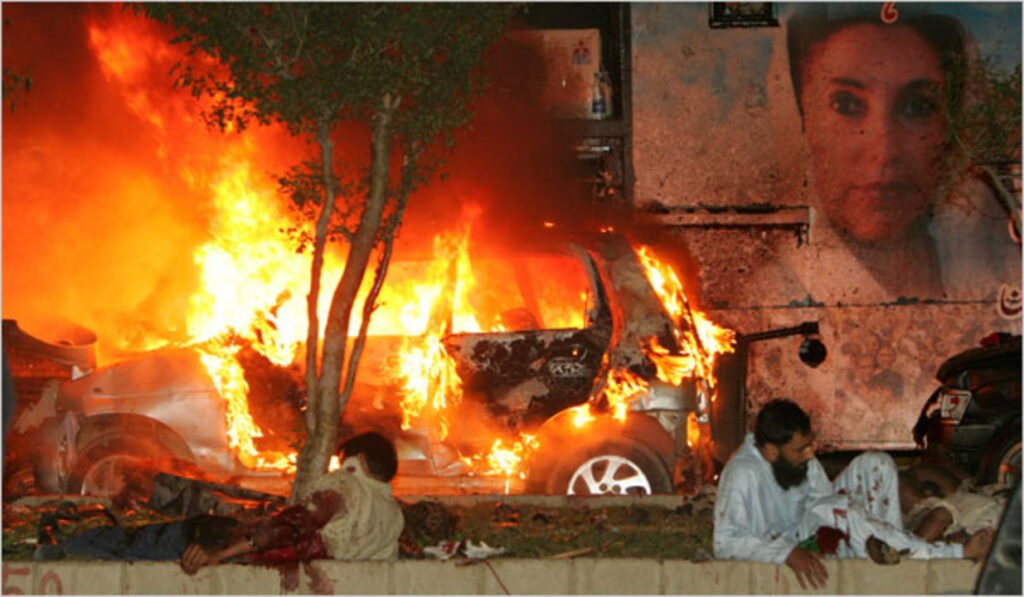
After this incident, Benazir and her husband, Asif Ali Zardari demanded increased security from Pervaiz Musharraf. It included four police cars, private guards, bomb jammers, and tinted windows.
Moreover, Pakistan Intelligence agency officers personally met Benazir and warned her about threats looming around her. They advised her to minimize her political movement.
However, she prioritized boosting her political campaign following the passion of PPP supporters despite threats to her. Benazir Bhutto did not have any idea that this decision would turn her into a successful assassination attempt this time.
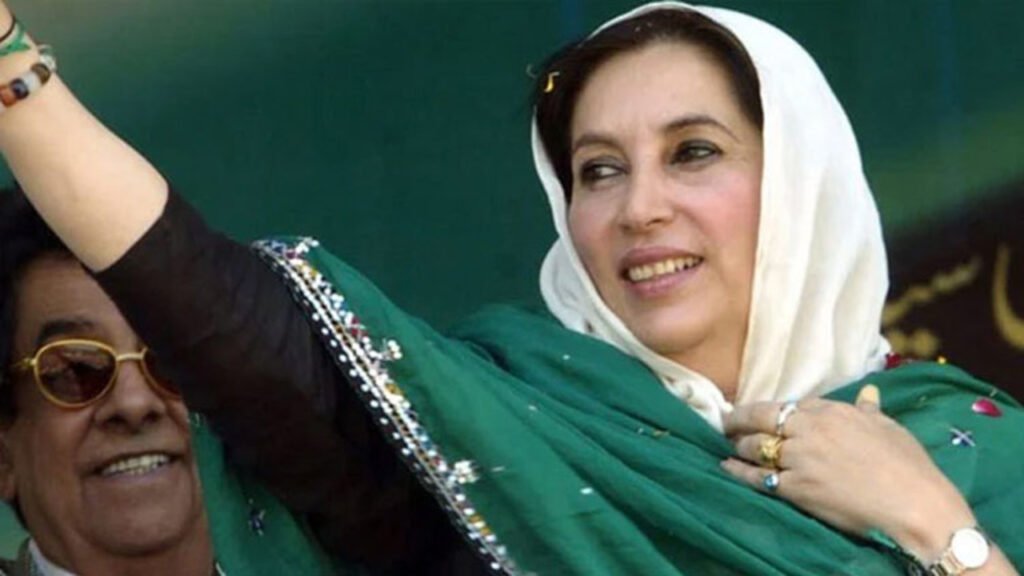
Assassination of Benazir Bhutto
Benazir Bhutto arrived at the historic place Liaquat Bagh, Rawalpindi to address a massive gathering of PPP supporters on December 27, 2007. An explosion shook a gathering when Benazir had just finished the addressing.
Benazir was ready to leave the event when one or more assassins opened fire on her bulletproof white Toyota Land Cruiser. She was standing in her car sunproof waving to fans when three bullets were heard. It caused her to fall back inside.
Then, a suicide bomber set off a bomb near her car. Before the explosion, assassins reportedly fired three gunshots at Benazir. Following this, she was brought unconscious to the Rawalpindi General Hospital.

Medical professionals under the direction of Dr. Mohammad Musaddiq Khan attempted to revive her by doing a left anterolateral thoracotomy for open cardiac massage. After multiple unsuccessful attempts, they declared her “dead.”
It is significant to note that the First Prime Minister of Pakistan Liaqat Ali Khan was also assassinated in the same incident place in 1951.
His father Sadiq Khan also brought him for medical treatment in the same hospital where Benazir was brought. Hence, the famous phrase” History repeats itself” is fully endorsed.
However, PPP spokesperson Farhatullah Babar first claimed Benazir Bhutto was safe, but after one hour of incident, he announced her death.
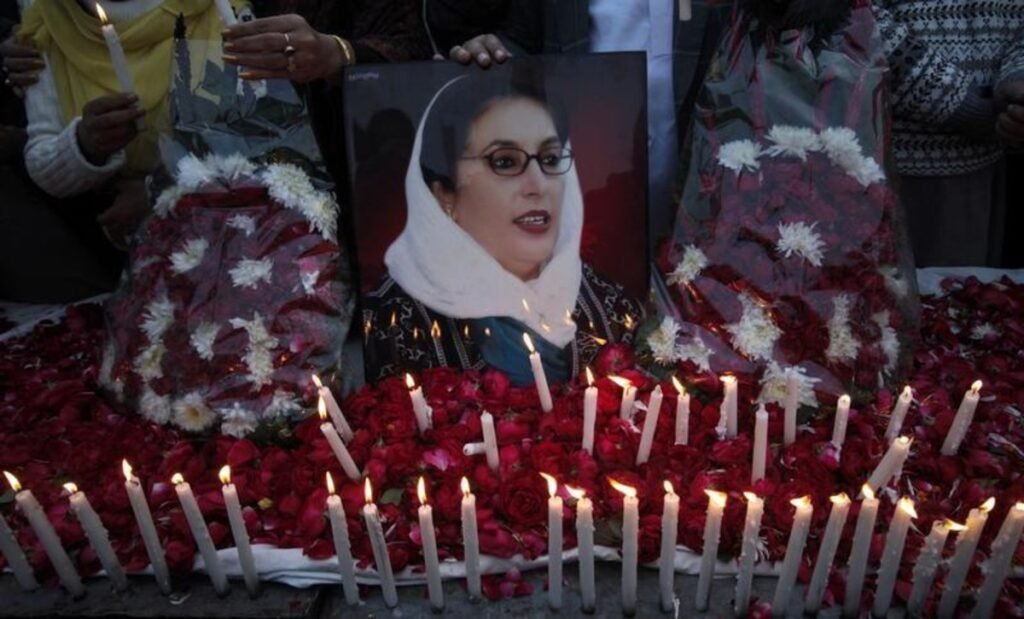
Funeral
The funeral for Benazir took place on the afternoon of December 28, 2007. Her body was moved from Rawalpindi’s Chaklala Airbase to Sukkur Airport at 1:10 a.m. on December 28.
Her children and husband went with her body. A lot of people from all over Pakistan came to Larkana to attend the funeral of the former Prime Minister.
The family used a helicopter to get the body to the grave spot. Benazir was buried next to her father in the family tomb in Garhi Khuda Bakhsh.

Aftermath of Assassination of Benazir Bhutto
The assassination of Benazir Bhutto threw Pakistan into chaos. Immediate reactions varied from surprise and grief to violent protests. Her death created a power imbalance and intensified political instability, which was already worsened by the growing threat of Islamist militancy and the ongoing conflict between democratic forces and the military establishment.
PPP fans and dieheart followers of Benazir went out of control after receiving news of her death. They burnt twenty-eight railway stations, 13 railway train engines, and seven trains.
It resulted in a loss of more than three billion rupees. The whole railway system had fallen since the night of December 27, 2007. Thousands of people were waiting for repair at railway stations.
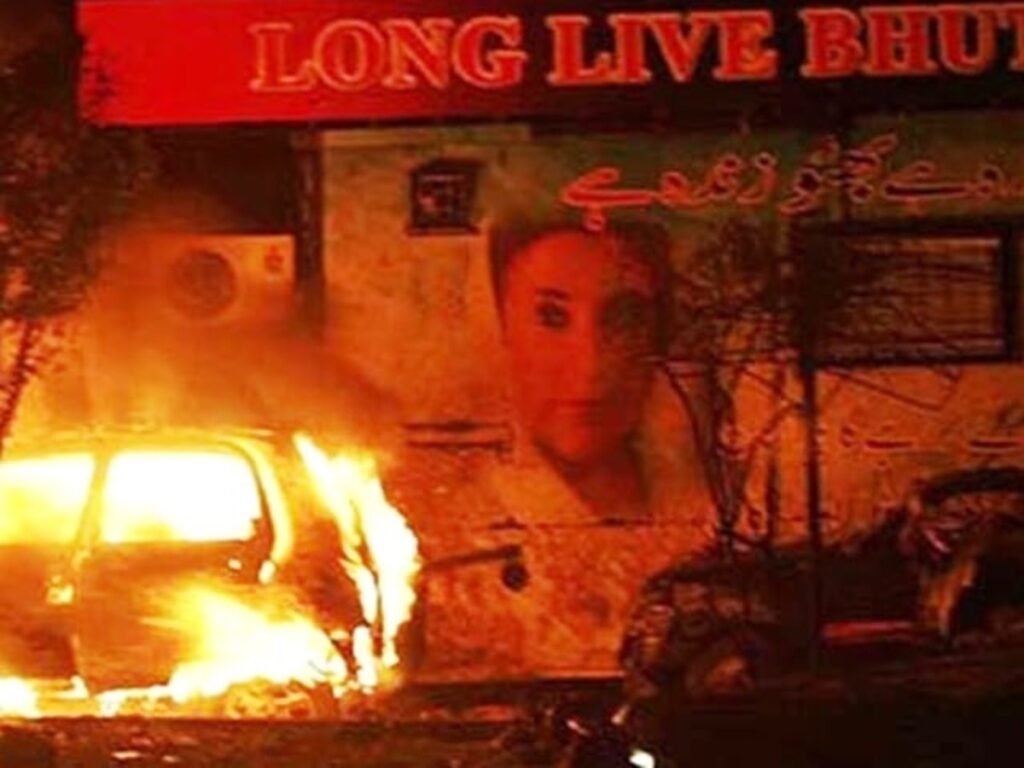
There was no report of peace and order restoration for several days. Angry mobs, mostly young people, also destroyed thousands of private cars around Pakistan. They also targeted the homes and offices of politicians, local government mayors, and administrators. They were either burnt or damaged.
Over 100 individuals were killed in violent incidents involving major protests, either by police or in clashes between various party followers.
Cause of death
The cause of Benazir Bhutto’s death has been widely debated and is extremely controversial. Initial reports based on Pakistani Interior Ministry information suggested she died due to a gunshot wound to the neck.
Rehman Malik, a security adviser for the Pakistan Peoples Party (PPP), claimed the assassin shot her in the neck and chest before exploding.
However, on December 28, the Interior Ministry announced that Benazir’s death was caused by a neck fracture when she fell into her vehicle and hit the sunroof catch after the gunshots.
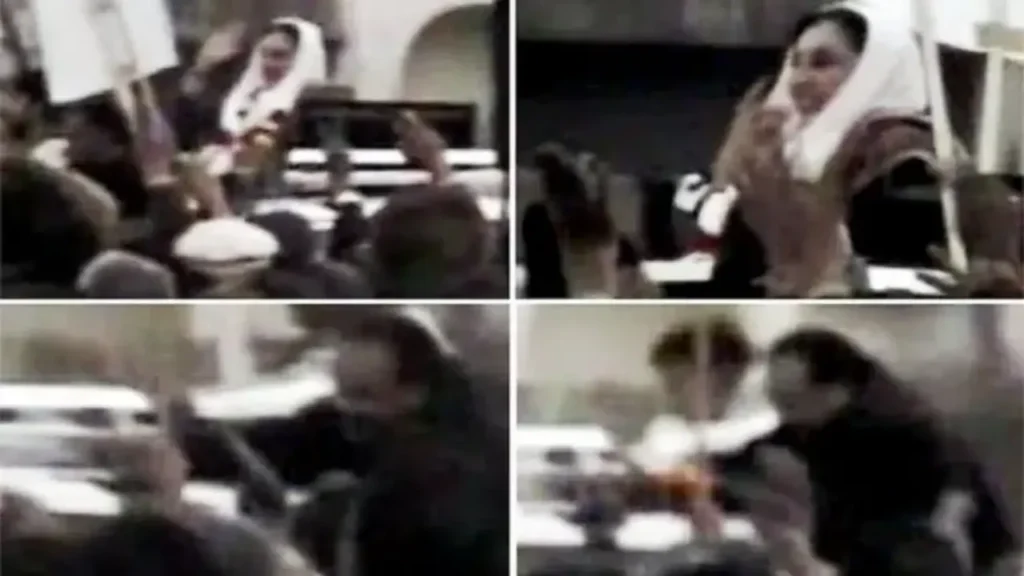
Later, the Interior Ministry related her death to a skull fracture from hitting the sunroof lever due to the blast shockwaves. It stated all gunshots missed her.
However, PPP spokesman Farhatullah Babar and Benazir’s lawyer Farooq Naik rejected these claims. They emphasized that she died from a gunshot which injured her abdomen and head.
Meanwhile, medical personnel at Rawalpindi General Hospital reported severe skull fractures but turned down the possibility of bullet wounds.
But no formal autopsy was conducted, as Benazir’s husband, Asif Zardari, did not permit it, citing concerns about the procedure in Pakistan. The crime scene was cleared before any forensic examination could be completed.
Scotland Yard investigators revealed the death cause of Benazir on February 8, 2008. It stated Benazir died from hitting her head due to the force of the bomb blast, not from a bullet. This finding aligned with the Pakistani government’s explanation, though Benazir’s supporters consider it suspicious.
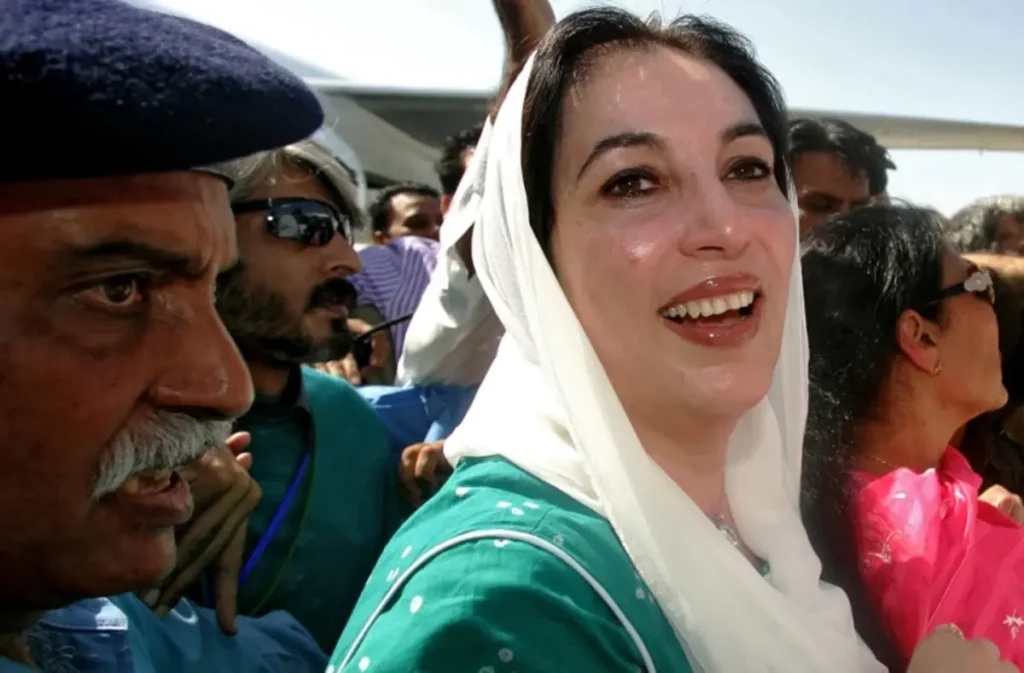
The responsible culprit behind the Assassination of Benazir Bhutto
The investigation surrounding her assassination was filled with controversy and inconsistency. The Pakistani government, led by President Musharraf, blamed the incident on the Pakistani Taliban, particularly terrorist commander Baitullah Mehsud.
However, this allegation has been considered with suspicions. This is because Baituallah Mehsud and TTP members denied their involvement in the assassination of Benazir Bhutto.
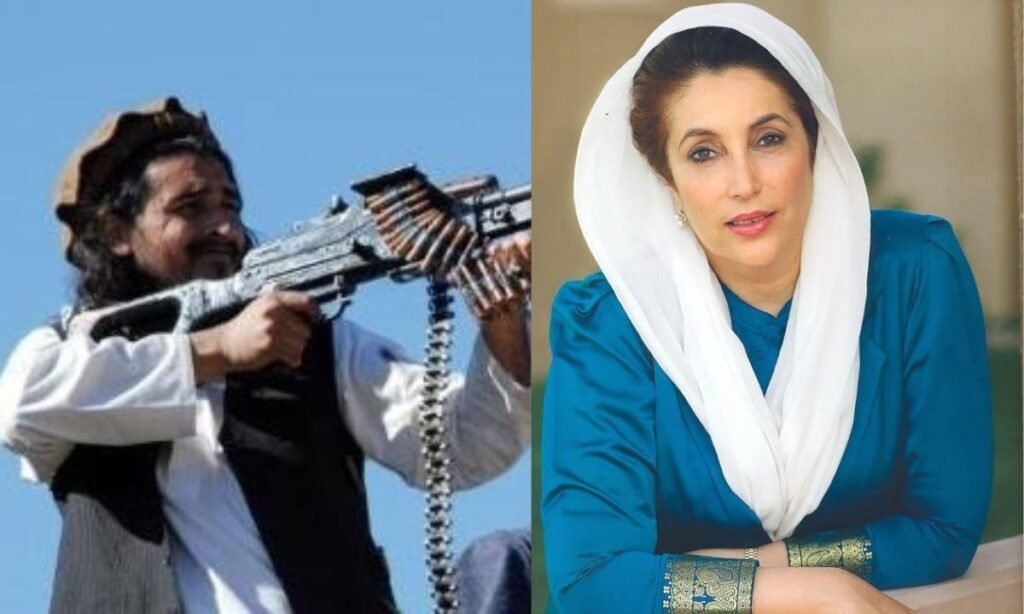
It is significant to note that Benazir had accused some officials in the intelligence agencies of planning to assassinate her. She reportedly wrote it in a letter to Pervaiz on October 16, 2007, two days before she arrived in Pakistan.
She named four people as being involved in an alleged plot to kill her: then-serving Intelligence Bureau (IB) Chief Ijaz Shah, former Punjab Chief Minister Chaudhry Pervaiz Elahi, former Sindh Chief Minister Arbab Ghulam Rahim, and former ISI chief Hamid Gul.
The United Nations also conducted an independent investigation into the assassination of Benazir Bhutto that finished in 2010. The UN report criticized Pakistani authorities for failing to provide proper protection and intentionally hindering the investigation.
It revealed severe flaws in evidence collection and storage, implying a larger conspiracy or at least criminal incompetence of the Pervaiz-led government. However, Pervaiz Musharraf denied all these claims stating her negligence caused her death as they had informed her about existing threats to her life.

Conclusion
Benazir Bhutto’s assassination on December 27, 2007, was an important turning point in Pakistani history. It highlighted the country’s deep-rooted political instability and the extreme threat of terrorism.
Despite returning to Pakistan to lead her party in the 2008 elections, Benazir’s life was brutally ended by a horrific assassination that shocked her followers and the globe.
The cause of her death is still debated, with contradicting reports and the lack of a proper autopsy raises concerns and severe speculations.
Share this content:




Post Comment